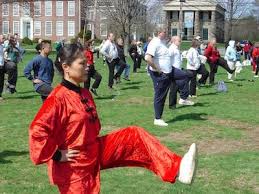best vagal toning exercises, understanding vagal toning, the importance of vagal toning exercises, deep diaphragmatic breathing, heart rate variability biofeedback, cold exposure, singing, chanting, and humming, yoga and tai chi
Introduction

Welcome to our comprehensive guide on accessing the best vagal toning exercises. In this article, we will explore a range of effective exercises that can help you cultivate vagal tone, enhance your overall well-being, and promote inner balance and resilience. We aim to provide you with valuable insights and practical techniques to unlock the full potential of your vagus nerve.
1 . Understanding Vagal Toning
Before we get into the exercises, let’s briefly understand what vagal toning is and its significance. The vagus nerve, a crucial component of our autonomic nervous system, plays a pivotal role in regulating various bodily functions. Vagal toning refers to the ability of the vagus nerve to adapt and respond to stressors, influencing our emotional, mental, and physical states. A well-toned vagus nerve is associated with improved resilience, emotional regulation, and overall health.
2 . The Importance of Vagal Toning Exercises
Engaging in specific exercises that target vagal tone can be immensely beneficial for your well-being. These exercises help activate the parasympathetic nervous system, stimulate the vagus nerve, and promote a state of relaxation and balance within the body. By incorporating these exercises into your daily routine, you can tap into the power of vagal toning and experience significant improvements in your overall health and quality of life.
3 Vagal Toning Exercises
- Deep Diaphragmatic Breathing

Deep Diaphragmatic Breathing
Deep diaphragmatic breathing is a simple yet potent exercise that can enhance vagal tone. Find a comfortable seated or lying position and place one hand on your abdomen. Breathe deeply through your nose, allowing your abdomen to rise as you fill your lungs with air. Exhale slowly through your mouth, noticing your abdomen falling. Practice this exercise for a few minutes each day to activate the relaxation response mediated by the vagus nerve.
- Heart Rate Variability Biofeedback

Heart Rate Variability Biofeedback
Heart rate variability (HRV) biofeedback is a technique that helps regulate and improve vagal tone. Using a heart rate variability monitor, you can track your heart rate and learn to control it through breathing exercises. By synchronizing your breath with the visual cues provided by the biofeedback device, you can enhance vagal tone and promote coherence between the heart and the brain.
- Yoga and Tai Chi

Yoga and Tai Chi
Both yoga and Tai Chi are ancient practices that combine movement, breath control, and mindfulness. These practices have been shown to increase vagal tone and promote overall well-being. Engage in regular yoga or Tai Chi sessions to experience the combined benefits of physical activity, deep breathing, and mindful awareness, which can significantly improve vagal tone.
- Singing, Chanting, and Humming
-

Singing, Chanting, and Humming
Engaging in activities that involve vocalization, such as singing, chanting, or humming, can stimulate the vagus nerve and improve vagal tone. These practices not only promote relaxation but also foster a sense of connection and expression. Dedicate time each day to explore your vocal abilities and enjoy the therapeutic benefits of these activities.
Cold Exposure

Cold exposure, such as cold showers or ice baths, has been found to stimulate the vagus nerve and increase vagal tone. The sudden cold temperature triggers a physiological response, activating the parasympathetic nervous system and promoting overall well-being. Start with gradual exposure to cold water and consult with a healthcare professional before attempting any cold exposure practices.
Conclusion
Congratulations! You now have access to some of the best vagal toning exercises that can nurture inner balance and resilience. By incorporating deep diaphragmatic breathing, heart rate variability biofeedback, yoga or Tai Chi, vocalization practices, and controlled cold exposure into your daily routine, you can enhance your vagal tone and experience profound improvements in your overall well-being. Remember, consistency and regular practice are key to reaping the full benefits of these exercises. Embrace the power of vagal toning, unlock your inner potential, and embark on a journey towards a healthier, more resilient you.
If you enjoyed this article, please like and share it with your friends, and don’t forget to subscribe for more great content!


